A test of ability in the world of bike building is being able to turn the banal into the beautiful. It’s hard to go wrong if you have a Ducati SportClassic up on the bench—and there’s a reason you don’t see many custom Honda Valkyrie Runes.
The streets of Japan are full of inoffensive and forgettable commuter bikes, and one of the most common is the Kawasaki BJ250. The little Kawa qualifies as a stern test for a builder, but after a session in the Taipei workshop of Max Ma, this one is almost unrecognizable.
If you’re in the States, you’ve probably never heard of the BJ250—but it was a huge seller for over 25 years in the East.
Launched in 1992, Kawasaki produced over 100,000 for the Asian markets. A handful also made their way to mainland Europe in the 1990s, where they were known as the ‘Estrella’ ( ‘star’ in Spanish).
Max normally works with heavy metal such as Harley Sportsters, but this jewel-like, vintage-style bobber shows that he’s a master of small-scale builds too.
He started by taking off the huge bench seat, binned the outsized fenders, and discarded the tank. The new tank, shaped in the classic peanut style, is entirely hand-made.
The Taiwanese inspection regulations are amongst the strictest in the world, and forbid frame modifications.
So Max has subtly trimmed the back of the frame to house a one-off shorty fender, and cleaned up all the tubing. It’s now coated it in a high-temp metallic paint that mimics the effect of metal but with a much smoother finish.
To level out and improve the stance of the Estrella, Max has shortened the forks and fitted new shocks. He’s also changed the wheel sizes, from F18/R17 to F19/R16 to suit the classic bobber style.
The rims are finished in black high-temp paint and the spokes are stainless.
Modern disc brakes look out of place on a build like this, so Max has swapped out the Estrella’s rudimentary front disc for a drum setup—taken from a Yamaha SR400.
Ironically, Kawasaki themselves replaced the front disc with a drum for later versions of the BJ250.
The solid 249cc air-cooled single gets a little extra pep from a new Keihin CR carb and a K&N air filter, and Max has handcrafted a free-flowing exhaust system to match.
There’s a megaphone-style muffler, but we’re told that the sound is quite civilized, thanks to hidden baffles inside. The previously stifled engine now feels much torquier than stock, and there’s an upgraded clutch from the Japanese specialists FCC to match.
The detailing is exquisite, from the shape and quality of the leather seat to the tiny vintage lights and the multitude of discreet, polished brackets dotted around the bike.
Even the T-bars, which are not a style we generally feature here, suit the bike. They’re mounted on a custom top yoke, and according to Max, make for a comfortable ride by lengthening the riding position on this very short bike.
The wiring loom is all-new, and wherever possible, Max has hidden wires and cables inside the bars and frame.
Even the humble key is more evidence of Max’s obsessive attention to detail: cast in 925 silver and then hand-carved, it’s an immaculate likeness of a tiny horse’s head.
It’s an overwhelmingly monochrome bike, with silver metallic being the dominant paint color. On the sides on the tank there’s a soft wave of deep blue, bordered with a thin gold pinstripe. The effect is mirrored on the edges of the rear fender, and the only other splash of color comes from the yellow lens of the tiny headlight.
It’s rare to see this level of craftsmanship on such a small bike. But as they say, size isn’t everything—and for the teeming, congested streets of Taipei City, Max’s tiny marvel is just perfect.
from Bike EXIF https://ift.tt/2DaiMlf

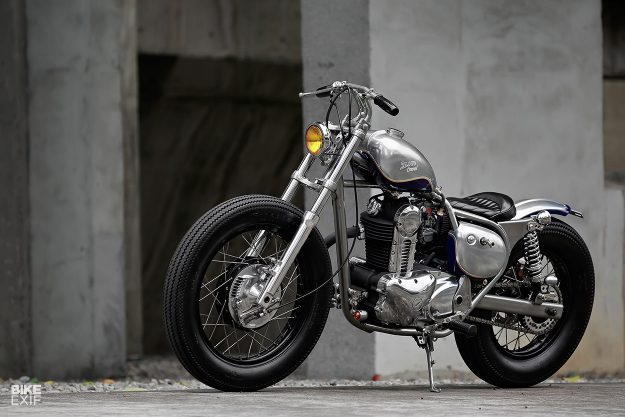
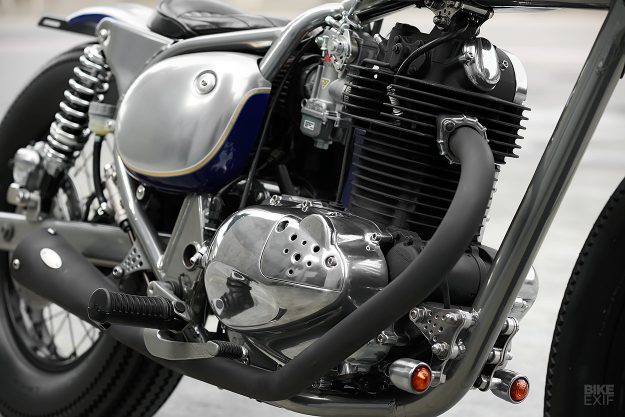
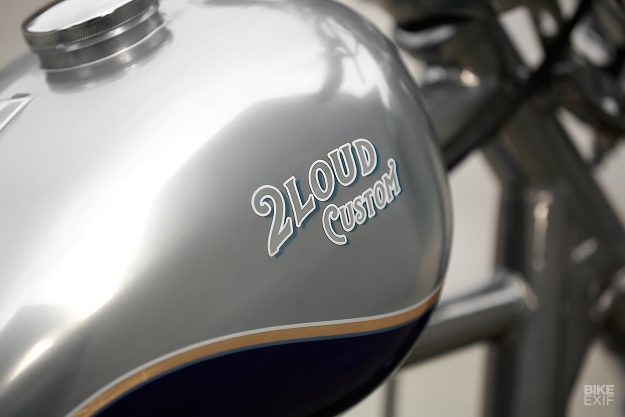

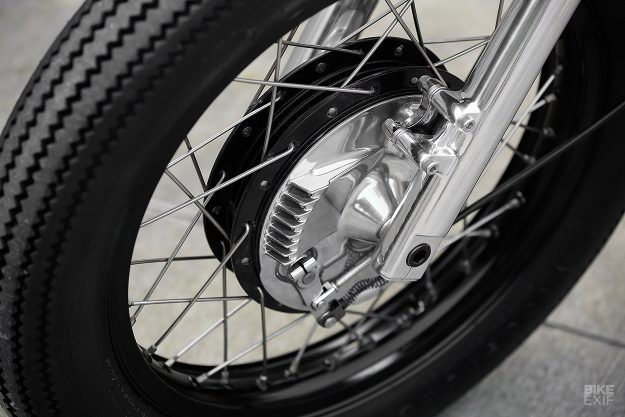
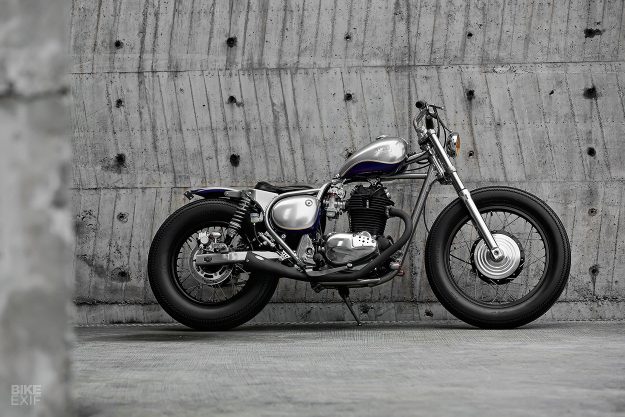

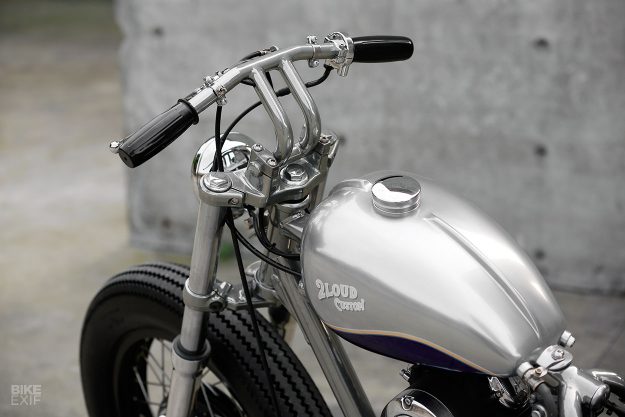

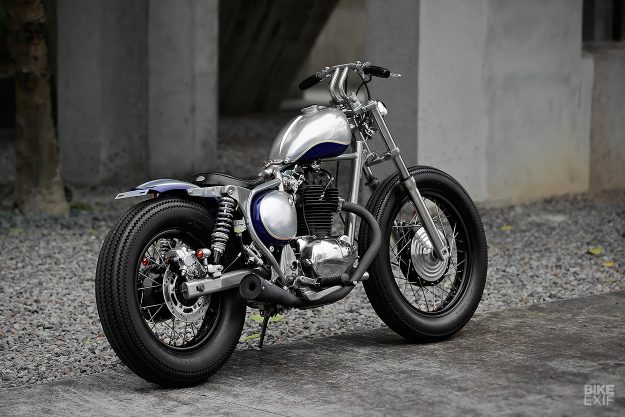
No comments:
Post a Comment